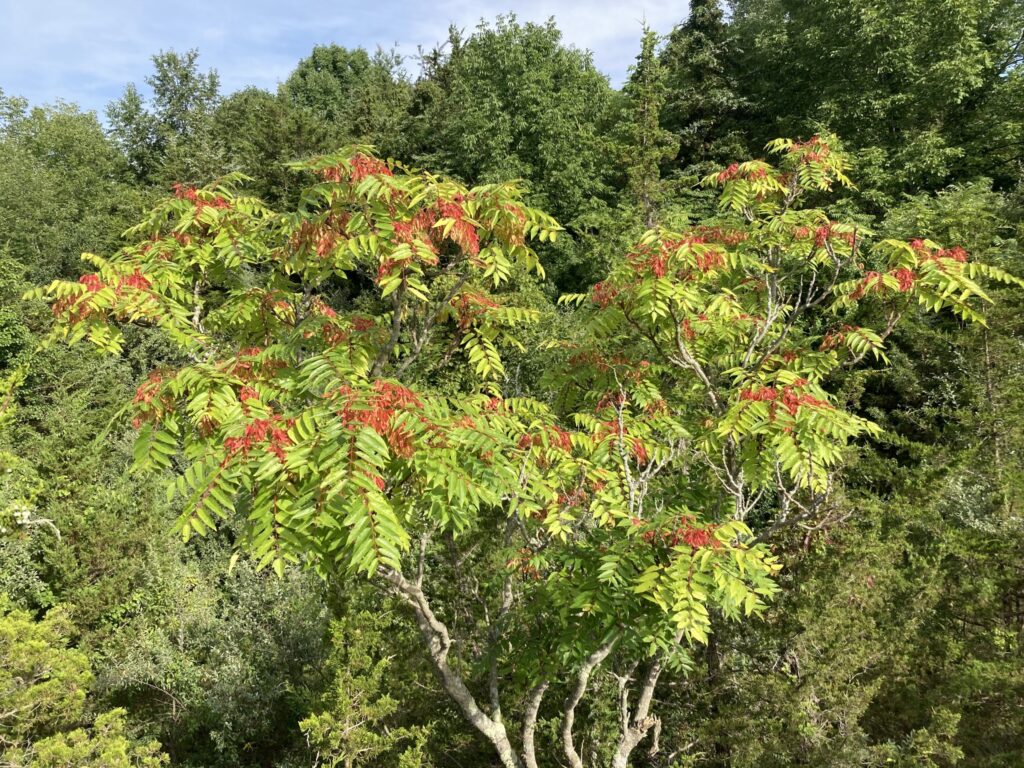Tree-of-heaven (Ailanthus altissima) is a long-lived, deciduous tree in the Quassia plant family (Simaroubaceae). Native to Asia, tree-of-heaven was introduced to North America as an ornamental plant, being sold in USA as early as the 1820s. Since its initial introduction to North America, tree-of-heaven has become a problematic invasive plant, particularly when it invades natural areas. It has a widespread shallow root system and exhibits prolific clonal growth, allowing it to create dense thickets. In natural areas where tree-of-heaven establishes, it has detrimental ecological impacts including the displacement of native plants, alteration of soil chemical properties through increasing nitrogen content, decreasing soil microbial activity and producing allelopathic chemicals that are toxic to other plants. Tree-of-heaven is also one of the preferred host plants for the invasive spotted lanternfly (Lycorma delicatula) (SLF) which could cause significant economic impacts if this insect were to become established in Canada.
*Note: Tree-of-heaven is regulated under the Ontario Invasive Species Act (2015) as a restricted species. It is illegal to import, deposit, release, breed/grow, buy, sell, lease or trade this species.
Click Below to Download the Tree-of-Heaven Best Management Practices:
